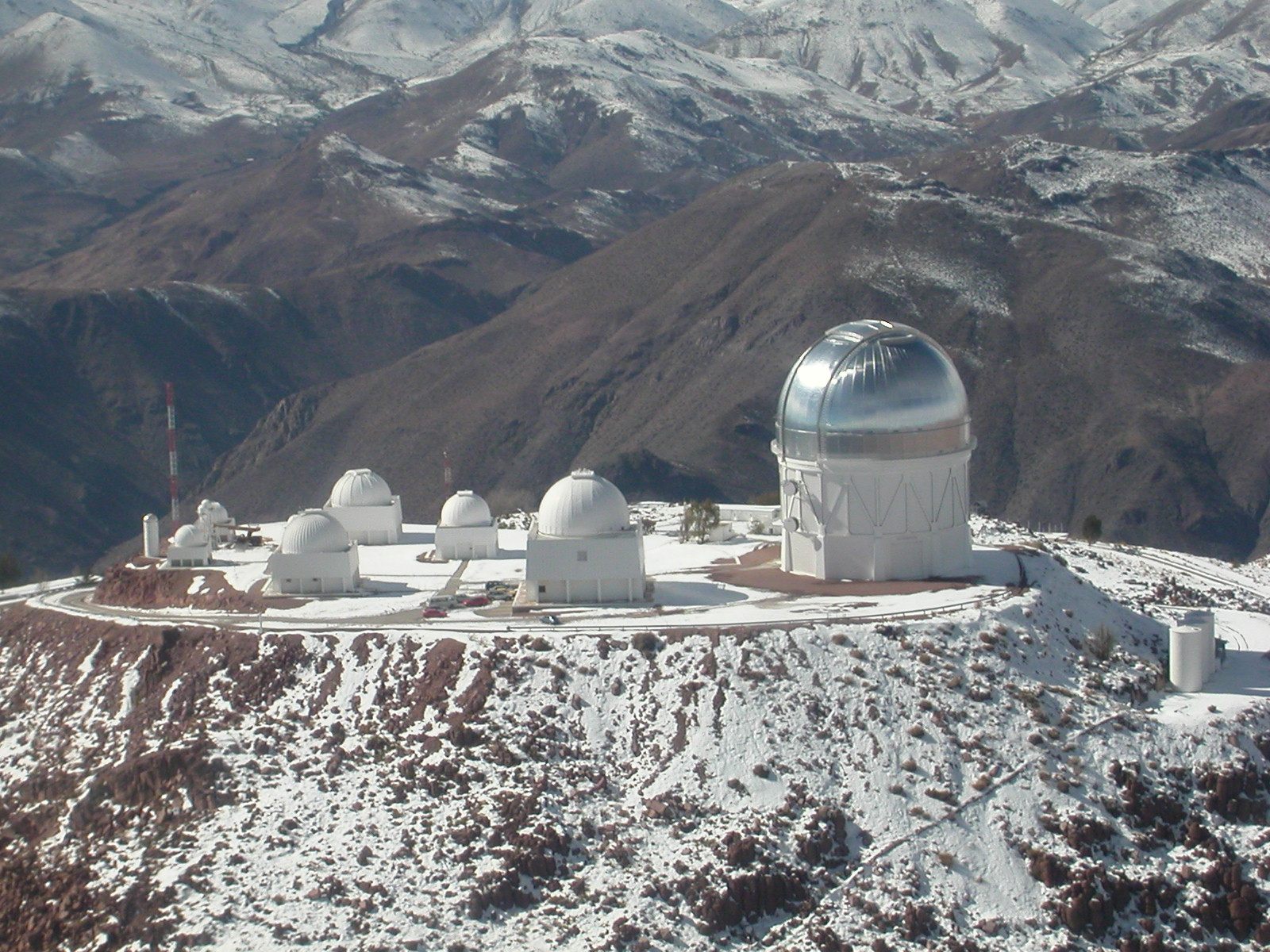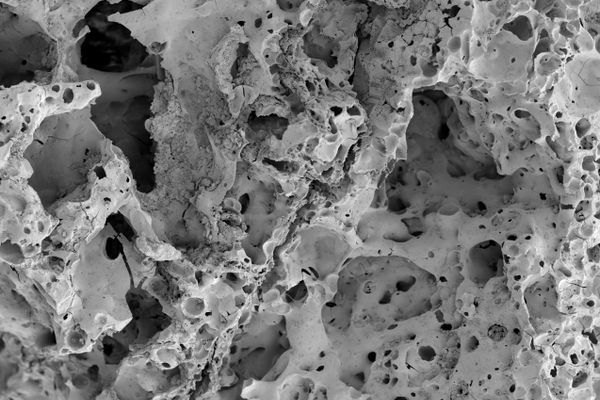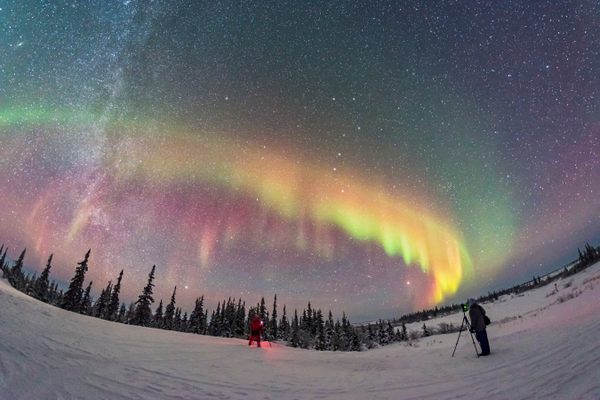How a Desert Mountain Telescope Revealed Jupiter’s Odd New Moon
Meet Valetudo, a moon that doesn’t just go with the flow.

A rogue neighbor can make life unpredictable. Putting out the trash a day early, playing loud music at all hours, never getting around to fixing that fence. Jupiter’s moons are getting a sense of what that feels like now, with a newly identified resident careening toward conflict with everyone else. This new moon, called Valetudo, is a bit of a renegade.
The worst-case scenario for Valetudo? It’s more serious than an icy glare from the front stoop. “Essentially, it’s going to be like a bug in the windshield,” says Scott Sheppard, an astronomer at the Carnegie Institution for Science in Washington, D.C. “It’s going to slap into something.”
Sheppard is leading a team that scrutinizes the darkest reaches of the solar system. To get the clearest, crispest, most sweeping views from Earth, it helps to get far, far away from other man-made creations, such as electric lights and buildings. “Magnificent desolation,” Sheppard says, is the ideal. “You want to be in the middle of nowhere.” That’s why, in March 2017, the team was studying the sky from the Cerro-Tololo Inter-American Observatory in Chile. The observatory is nestled high in the desert mountains of the Atacama region. It’s a few hours’ drive from the nearest city, and the night sky is dazzling. If you go outside late at night and let your eyes adapt, Sheppard says, “the sky blows you away.”

The team had planned to use the observatory’s Blanco four-meter telescope to scout for objects way out, beyond Pluto, and they also decided to train their gaze on Jupiter’s neighborhood in the night sky. They knew that the solar system’s largest planet was going to be bright and hanging in the sky all night. “We could choose our field of observation to be very close to Jupiter, so we could look for things moving at Jupiter’s rate—foreground objects, moving quite fast,” while still on the hunt for relatively slower-moving objects in the fringes of the solar system, Sheppard says. “We could kill two birds with one stone: survey for Jupiter moons and very distant objects at the same time.”
Before Sheppard’s team conducted their survey, there were 69 known Jovian moons, but there’s always been reason to believe there are quite a few more. Because the planet is so big and bright, researchers surmised that unrecorded moons could be faint, or even obscured, or quite far from the gas giant. The telescope in Chile, with a powerful digital camera that can shade against glare and scattered light, provided Sheppard and his collaborators with a wider and more detailed view than had been possible before. After their observations and more than a year of follow-ups and confirmations, they announced this week that they found 12 new moons.
As a whole they’re not so unusual or remarkable, except, perhaps, for that rogue, Valetudo. Measuring less than a mile in diameter, it’s the smallest of Jupiter’s known moons, and Sheppard describes it as an “oddball.”

It doesn’t behave like the other moons, which tend to fall into a few categories. The largest among them are the Galilean satellites—Io, Europa, Ganymede, and Callisto—large moons that orbit close to the planet. They are prograde moons, meaning that they orbit in the same direction as Jupiter’s rotation. Some of the outer moons, on the other hand, are retrograde moons, which orbit in the opposite direction. In their recent observations, Sheppard’s team documented nine of these (along with two prograde, closer-in moons). It may sound chaotic, but since “they’re at different distances, they don’t really ever interact with one another,” Sheppard says. But not Valetudo.
The small moon rotates at the distance of the retrograde moons, but it’s traveling in the other direction. It crosses the orbits of other moons, and that’s where things might get dicey. “It’s basically like you’re driving down the highway in the wrong direction,” Sheppard says. “Cars are coming right at you, and it’s very likely you’re going to have some head-on collision.”
Sheppard and his colleagues speculate that Valetudo was probably once much larger, but was ground down, over the course of billions of years, as a result of collisions. The researchers even wonder if the crashes are responsible for the swarms of smaller Jovian moons we see today. Researchers at the International Astronomical Union’s Minor Planet Center used Sheppard’s team’s data to estimate when another collision might happen. The best forecast, for now, is some time in the next billion years. (“Big in terms of human timescales, but not that big in terms of the solar system,” Sheppard says.)
The view from the Chilean mountaintop taught researchers a lot, but there’s more to learn. The new moons are faint, so researchers haven’t been able to spot features on their surfaces or clues to what they’re made of. “We think they’re something in between the rocky asteroids, which are interior to Jupiter, and the icy comets, which are exterior to Neptune,” Sheppard says. “These objects are probably some intermediate-type composition, half-rock and half-ice, something like that.” It’s not clear when Valetudo will get a close-up, but it ought to be before anything goes splat.











Follow us on Twitter to get the latest on the world's hidden wonders.
Like us on Facebook to get the latest on the world's hidden wonders.
Follow us on Twitter Like us on Facebook